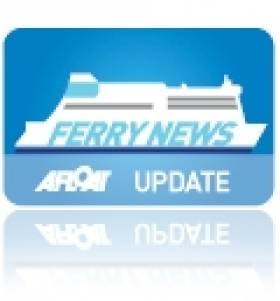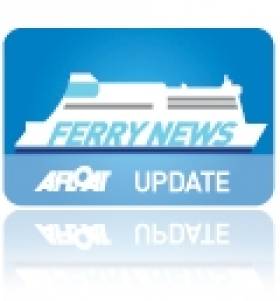Displaying items by tag: Superfast X
#Super&Swift- Irish Ferries HSC (high-speed craft) Jonathan Swift is currently the only such vessel operating on the Irish Sea, since the HSS Stena Explorer was withdrawn from service last September, writes Jehan Ashmore.
As Easter approaches, the competition for market-share on the Dublin-Holyhead route rises, with Stena Line set to launch Superfast X this month on the core Irish Sea route alongside Stena Adventurer.
Rivals, Irish Ferries fast-ferry is marketed as the Dublin 'Swift' which is partnered by Ulysses. In addition during weekdays sailings are provided by ro-pax Epsilon.
Stena Line, last month officially confirmed the permanent closure of the Dun Laoghaire-Holyhead with no service by the HSS Stena Explorer in 2015.
This uniquely positions Irish Ferries Jonathan Swift as the only Irish Sea fast-ferry until P&O Ferries resume the Express fast-craft operated Larne-Troon seasonal route on 31st March.
Also joining this fast-ferry league will be the Isle of Man Steam Packet's Manannan which also reopens a seasonal service. Firstly, the Liverpool-Douglas route on 26th March.
Returning to Stena Line, Superfast X boasts 10 decks and a 1,200 passenger capacity ferry fresh from a recent major refit that took three months to complete in Poland.
Both passenger motorists and freight vehicle deck capacity will be almost 2kms long. High sided freight-trailers of up to 4.65 metres will also be accommodated.
Upon entry of Superfast X, she will directly replace the smaller Nordica which heads off for a new career on the Strait of Dover.
Stena’s ‘Superfast X’ to Debut in Dublin Port Early March
#StenaSuperfastX – Stena Line's announcement last week to consolidate its Dublin-Holyhead route and close Dun Laoghaire-Holyhead HSS services, will be manifested by the debut of 'Superfast X' to Dublin Port in early March, writes Jehan Ashmore.
According to the operator's UK website, Stena Superfast X is to make her first sailing as the route's 'flagship' from Dublin Port to Holyhead in the early hours of Monday 9 March.
The Superfast X at 29,800 tonnes will directly replace the Stena Nordica. The larger newcomer will join the route's other existing second ship, Stena Adventurer of 44, 000 tonnes.
By introducing Superfast X, the ferry with a 1,200 passenger capacity compares starkly to Nordica which only handled 400. In addition freight capacity will be 2kms of lane metres.
In order to achieve these loading capabilities, work on Superfast X as previously reported by Afloat.ie, are reaching the final phases of a major refurbishment and internal reconfiguration by MacGregor.
This will see facilities for passenger space quadruple as decks eight, nine and most of deck 10 are exclusively for guests instead of the confined single deck facilities found on Stena Nordica.
The works on Superfast X, previously Dieppe Seaways, that ran DFDS Seaways Dover-Calais services are been carried out by MacGregor in association with the Romentowa shipyard in Gydnia, Poland.
This yard on the Baltic Sea is not to be confused with another Romentowa facility in the neighbouring port of Gdansk, where a further pair of 'Superfast' sisters, were extensively converted into Stena's Superfast VII and VIII. For a previous related report, click HERE.
Following radical refits, the transformed pair where launched in 2011 on the new Belfast-Cairnryan route, following the closure of the Scottish port of Stranraer.
Nordica's is scheduled to make her final sailing from Holyhead on Sunday 8 March, by arrival late at night into Dublin Port.
As mentioned above, the inaugural Superfast X sailing is scheduled to take over from Nordica's sailing roster during a transition in the Irish port.































































